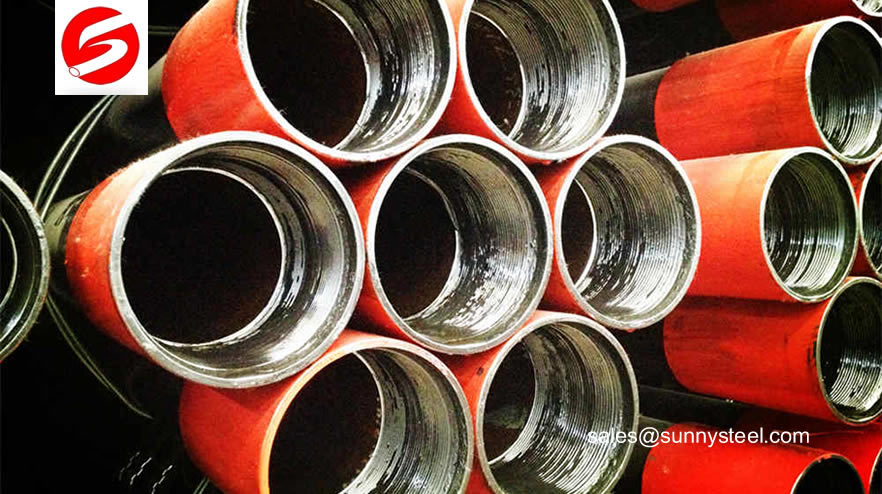In addition, it provides excellent elevated temperature tensile, creep and stress-rupture strengths.
Chemcial Composition - 316/316L stainless steel tubing and pipe
| Grade | 316 | 316L |
|---|---|---|
| UNS Designation | S31600 | S31603 |
| Carbon (C) Max. | 0.08 | 0.030* |
| Manganese (Mn) Max. | 2.00 | 2.00 |
| Phosphorous (P) Max. | 0.045 | 0.045 |
| Sulphur (S) Max. | 0.030 | 0.030 |
| Silicon (Si) Max. | 1.00 | 1.00 |
| Chromium (Cr) | 16.0 – 18.0 | 16.0 – 18.0 |
| Nickel (Ni) | 10.0 – 14.0 | 10.0 – 14.0 |
| Molybdenum (Mo) | 2.0 – 3.0 | 2.0 – 3.0 |
| Nitrogen (N) | — | — |
| Iron (Fe) | Bal. | Bal. |
| Other Elements | — | — |
The main constituents of 316 stainless steel - other than iron - are Chromium and Nickel. However, it is the addition of 2% Molybdenum that provides the increased corrosion resistance.
316 contains 16 - 18% Chromium (Cr). Chromium is the essential chemical in all stainless steel and it is that which forms the thin passive layer that makes the metal "stainless"
316 also contains 10-14% Nickel (Ni). This is added to make the Austenitic structure more stable at normal temperatures.
The nickel also improves high-temperature oxidation resistance makes the steel resistant to stress corrosion cracking.
Where the steel is to be stretched formed a lower percentage (8%) of nickel should be selected. If the steel is to be deep drawn a higher percentage is better (9% or more).
In addition a number of other chemicals may be present but these are expressed as maximum permited levels with the exception of the increased quantity of carbon required in 316H - i.e. a minimum of .04% and a maximum of 0.10%
Electrical Properties
Electrical Resistivity
|
7.2e-005 ohm-cm
|
7.2e-005 ohm-cm
|
at 20°C (68°F); 1.16E-04 at 650°C (1200°F)
|
Magnetic Permeability
|
1.008
|
1.008
|
at RT
|
Typical Mechanical Properties- Stainless Steel 316/316L
| Material | Form | Tensile Strength (ksi) | Yield Strength (ksi) | % Elongation | Hardness HB |
|---|---|---|---|---|---|
| Alloy 316L | 316L Sheet AMS 5507 | 100 max | - | 45 |
-
|
| Alloy 316 | 316 Sheet AMS 5524 | 75 min | 30 | 45 | 207 max |
Design Features - 316/316L Stainless Steel
- Type 316 is more resistant to atmospheric and other mild environments than Type 304. it is resistant to dilute solutions (i.e. 1-5%) of sulfuric acid up to 120°F. However, in certain oxidizing acids, Type 316 is less resistant than Type 304.
- 316 is susceptible to carbide precipitation when exposed in the temperature range of 800° - 1500°F and therefore is susceptible to intergranular corrosion in the as-welded condition. Annealing after welding will restore corrosion resistance.
- Type316L has the same composition as Type 316 except the carbon content is held below 0.03%. Not unexpectedly, its general corrosion resistance and other properties closely correspond to those of Type 316. However, it does provide immunity to intergranular attack in the as-welded condition or with short periods of exposure in the temperature range of 800° - 1500°F. The use of 316L is recommended when exposure in the carbide precipitation range is unavoidable and where annealing after welding is not practical. However, prolonged exposure in this range may embrittle the material and make it susceptible to intergranular attack.
- The maximum temperature for scaling resistance in contnuous services is about 1650°F, and 1500°F for intermittent service.
- May be susceptible to chloride stress corrosion cracking.
- Non-hardenable; non-magnetic in the annealed condition, and slightly magnetic when cold worked.
- Improved corrosion resistance to chlorides.
Typical Applications - Stainless Steel 316/316L
- Nuclear
- Chemical Processing
- Rubber
- Plastics
- Pulp & Paper
- Pharmaceutical
- Textile
- Heat exchangers, condensers & evaporators
Tensile Requirements - Stainless Steel 316/316L
Tensile Strength (KSI): 70
Yield Strength (KSI): 25
KSI can be converted to MPA (Megapascals) by multiplying by 6.895.









